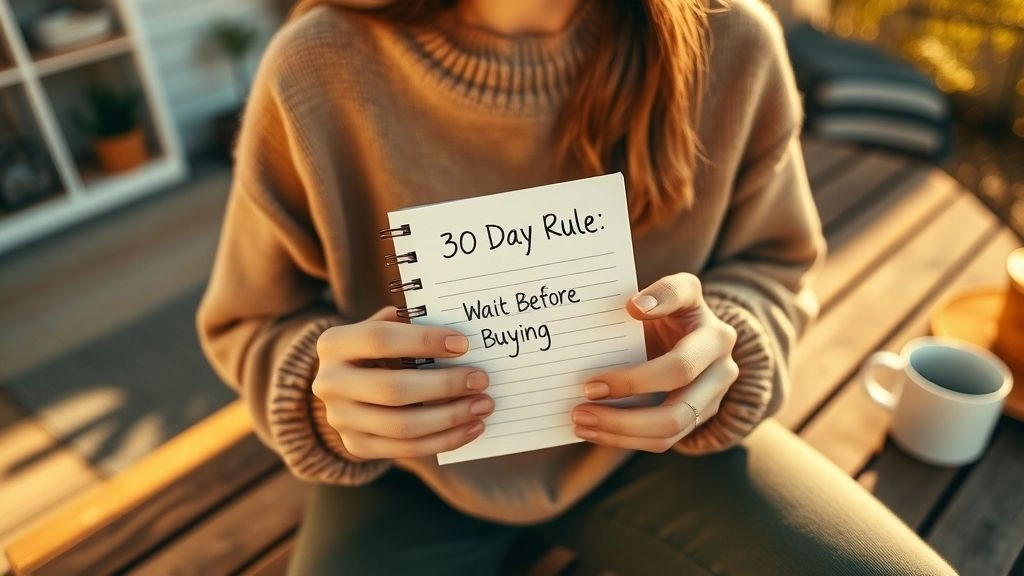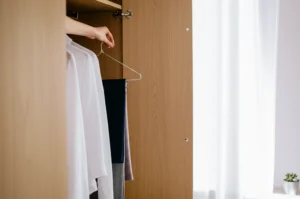Have you ever found yourself tempted by a shiny new gadget or that cozy sweater on sale, feeling that itch to buy right then and there? But later, when you look at your bank statement, you wonder: “Did I really need that?” If that sounds too familiar, you’re not alone. There’s this simple trick called the 30 day rule that can help us all get a little smarter with money—and honestly, it’s kind of like hitting a pause button on impulse spending.
Let’s dive into what this rule really means, why it works so well, and how it fits right in with some of the best frugal habits to save money. I’ll be real with you—this is the sort of advice I wish a friend had told me years ago, before I bought three online courses I never used.
Impulse Buy Traps
Why Do We Buy on a Whim?
Confession time: I’ve been there. Just the other week, I caught myself browsing online sales, scrolling past stuff I didn’t need but… it was on sale! Ever wonder why those flashy discounts and timed offers get under your skin so easily?
Well, marketers know exactly what they’re doing. They tap into that emotional part of our brain that says, “Don’t miss out!” But here’s the kicker: a lot of those impulse buys don’t bring lasting happiness. Instead, they drain your wallet and pile up clutter.
How Much Does “Just This One” Add Up?
Think about your own habits—coffee runs, extra treats, those “small” purchases here and there. It all adds up. Spending $6 on specialty coffee every workday? That’s close to $150 a month. A pair of impulsive shoes or gadgets later? Easily hundreds more. Suddenly, your budget has a leak.
That’s why tuning into your spending patterns is crucial. You might even want to check out some frugal habits to save money people swear by. They built their savings one smart choice at a time.
More Than Waiting
What Is the 30 Day Rule to Save Money?
The 30 day rule is simple—but powerful. When you spot something you want but don’t really need, instead of buying it immediately, you wait 30 days. Yes, a whole month. After those 30 days, you check in with yourself: Do you still want it? Is it worth it? Or did the urge pass?
This simple pause often cuts impulse spending drastically. For example, a friend of mine once wanted new earbuds—not in her budget at the time, but she bought them anyway. After a few weeks, she realized she rarely used them. If only she had waited 30 days, she would have saved about $80.
Why 30 Days? Why Not Shorter or Longer?
Thirty days is that sweet spot. Long enough for the hype to wear off but not so long that you forget why you wanted the item (unless it wasn’t that important!). This gives you time to compare prices, search for better deals, or even reconsider if you really need the item.
Think of it like letting excitement simmer down so you can make a clear-headed choice. It’s a neat mental trick that aligns with a bunch of unusual frugal tips out there.
What Happens After 30 Days?
Usually, one of three things happens:
- You forget about it entirely. Honestly, this happens way more than you think.
- The item isn’t as appealing anymore, or you find a better alternative.
- You still want it—and if so, it might be worth buying.
This way, your spending is more intentional, and you’re less likely to suffer from that classic buyer’s remorse.
Making the 30 Day Rule Work
Keep a Purchase List
One practical way to stick with the 30 day rule is to keep a little list. Whenever you want something outside your essentials, jot it down—item, price, store, date you first noticed it. Then set a reminder for 30 days later. Trust me, this simple habit can save you hundreds.
When the day comes to revisit the list, go over it carefully. Does that impulse still have the same pull? Or are you already eyeing something new?
Pair This With Smart Budgeting
If you combine the 30 day rule with budgeting (like the popular 50/30/20 style), you’re golden. That kind of structure helps balance what you need, what you want, and what you save. And if you want to see how the pros do it, check out habits of millionaires—many swear by delayed gratification and mindful spending.
Exceptions to the Rule
Of course, this rule isn’t for everything. Groceries, bills, or urgent purchases? No. Those are for right-now decisions. But when it comes to clothes, gadgets, or home decor? Absolutely. That 30 day pause can be a lifesaver.
Handling Sales and Fear of Missing Out
What if it’s a limited-time deal? I feel you. But here’s the thing: many deals come back, or you find even better ones later. And sometimes, missing out is what frees you to save more. Plus, with the rule, you learn to spot real opportunities versus marketing hype.
Real-Life Impact
Small Changes, Big Wins
Let me share this—when I started using the 30 day rule for things like clothes or random kitchen gadgets, I saved enough in just a few months to fix my old leaky faucet. It felt amazing to have that money sitting there, ready for something useful rather than forgotten on impulse buys.
Another friend uses it to fund mini-vacations. She says delaying buys helped her stash away enough cash for a surprise weekend getaway. Cool, right?
Building Wealth on Simple Habits
And it’s not just about saving pennies. This rule is part of the bigger picture of how to be frugal like a millionaire? Seriously, millionaires often credit their success to habits like mindful spending, patience, and strategic saving instead of chasing every shiny thing.
When you learn to pause, you’re training your brain to focus on what truly matters. Spending becomes intentional, not compulsive.
| Category | Impact (Monthly Savings Estimate) | Example |
|---|---|---|
| Clothing & Accessories | $50–$100 | Buying fewer impulsive outfits |
| Electronics & Gadgets | $75–$200 | Delaying upgrades or new gear |
| Home Décor & Nonessentials | $40–$80 | Waiting on seasonal buys |
Taking It Further
Turn Savings Into Gains
Here’s a tip: Instead of spending that 30-day savings, stash it into a high-interest savings account or use it to chip away at debt. Your future self will thank you. This aligns with some frugal habits to save money that many people find life-changing.
Say Yes, but Wisely
Sometimes, after 30 days, you do want that item. And that’s okay! The key is you’ve made a calm, thoughtful choice. You’re not ruled by impulse anymore. You’re empowered.
Remember: Balance Is Everything
That’s why in this journey, it’s helpful to read about unusual frugal tips, mixing discipline with room for joy. Because saving money isn’t about feeling deprived—it’s about making space for the things that truly matter.
Final Thoughts
So, what do you think about the 30 day rule? It’s simple, but it’s like a financial reset button—a way to take control of those sneaky urges that chip away at your wallet. Not every purchase needs to be immediate, and honestly, most can wait and save you cash and headaches.
Try this out: next time you feel the rush to buy something “just because,” put it on a list, set a reminder, and wait 30 days. See how many times the urge fades. Pair it with other fundamentals, like the habits of millionaires or how to be frugal like a millionaire? and watch your financial health improve.
Honestly, it’s a small change that leads to big wins—more savings, less guilt, and a clearer path to your goals. Why not start today?













